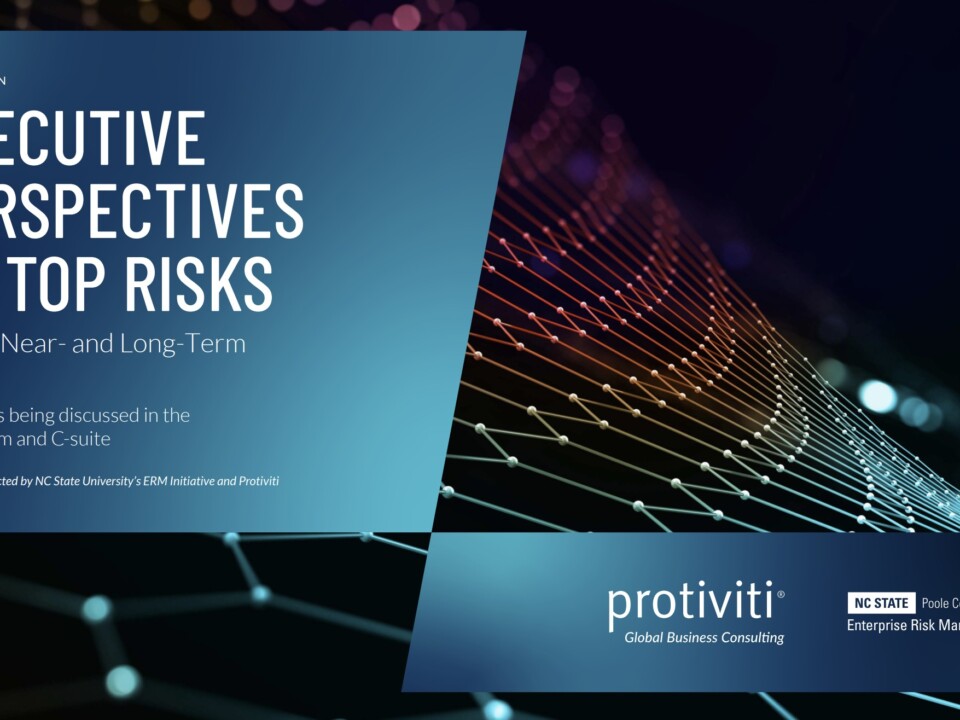
7 Strategic Risks That Threaten the Future of Internal Auditing
January 17, 2024
25 Internal Audit Influencers to Follow
January 28, 2024Given the global reach of the internal audit profession, I am an avid student of various reports that sound alarms about key risks facing the world in the near term. For me, they have repeatedly provided a window on the pending turmoil and uncertainty of the first quarter of this tumultuous decade.
There are several organizations that generate valuable risk outlook reports. However, in recent years, I have found the World Economic Forum’s (WEF) Annual Risk Report to be a particularly valuable resource when assessing global risks. Those who have attended my seminar on Auditing at the Speed of Risk know that I use the results of more than a decade of World Risk Report data to illustrate the volatility of global risks in the era of permacrisis.
The WEF’s Global Risk Report 2024 has just been released, and it does not disappoint when delving into the myriad risks that the world faces in the short, medium and long-term. Generated during the late months of 2023, The Global Risk Report 2024 presents a stark reminder that risks are not just a theoretical inventory of bad things that could happen – they often present clear and present dangers to global economic order, the health and safety of the world’s citizens, and potentially even the existence of mankind itself.
By this time of the year, most internal audit functions have long-since undertaken an annual risk assessment and are already executing the annual audit plan. However, as I have written on countless occasions in this blog, risk assessment and audit planning must be a continuous process. Last January, few of us were seriously concerned about turmoil in the US banking system, disruption from rapidly evolving artificial intelligence (AI), or a new war in the Middle East. Yet, all of those risks and more impacted us in 2023.
If I were a CAE in 2024, I would be perusing every resource I could lay my hands on to validate and update my risk assessment. The WEF’s 2024 Global Risk Report is such a resource. The forward-looking risk outlook beyond 2024 is certainly valuable when contemplating/monitoring emerging risks or those that lie on the horizon, but it’s the “current risk landscape” that should be front and center when monitoring our enterprise risks and revising our 2024 plans. The WEF outlines the risks that respondents to their Global Risks Perception Survey (GRPS) “believe are most likely to present a material crisis on a global scale in 2024.” The top 10 are:
- Extreme weather.
- AI generated misinformation and disinformation.
- Societal and/or political polarization.
- Cost of living crisis.
- Cyberattacks.
- Economic downturn.
- Disrupted supply chains for critical goods and resources.
- Escalation or outbreak of interstate armed conflicts.
- Attacks on critical infrastructure.
- Disrupted supply chains for food.
But, as I noted above, the GPRS survey respondents were also asked about risks that presented likely severe impacts in the world in the next 2-10 years. The top 5 risks over the next 2 years according to respondents are:
- Misinformation and disinformation
- Extreme weather events
- Societal polarization
- Cyber insecurity
- Interstate armed conflict
The same respondents were far more focused on environmental risks when the time horizon was extended to 10 years. The top 5 risks in terms of likely impact (severity) were:
- Extreme weather events
- Critical change to Earth systems
- Biodiversity loss and ecosystem collapse
- Natural resource shortages
- Misinformation and disinformation
As I have noted before, the WEF report will resonate more with some of my readers than others. Those whose organizations have a global mission/footprint will be keen to explore these results further. Yet, even if your company or public sector organization is small and operates in a geographically confined area, you should not overlook the directional nature of this report. For example, the #2 risk for the year ahead (AI generated misinformation and disinformation) will know no geographic or sector boundaries when generating disruption.
Reviewing risk outlooks such as the WEF’s 2024 Global Risk Report can leave one feeling a little discouraged. Afterall, none of the scenarios envisioned look very promising. However, as the report’s authors conclude:
“The future is not fixed. A multiplicity of different futures is conceivable over the next decade. Although this drives uncertainty in the short term, it also allows room for hope. Alongside global risks and the era-defining changes underway lie unique opportunities to rebuild trust, optimism and resilience in our institutions and societies. It is our hope that the report serves as a vital call to action for open and constructive dialogue among leaders of government, business and civil society to take action to minimize global risks and build upon long-term opportunities and solutions.”
I welcome your thoughts on the new WEF report. Share your perspectives with me on LinkedIn or X. Or drop me an email at blogs@richardchambers.com.




I welcome your comments via LinkedIn or Twitter (@rfchambers).